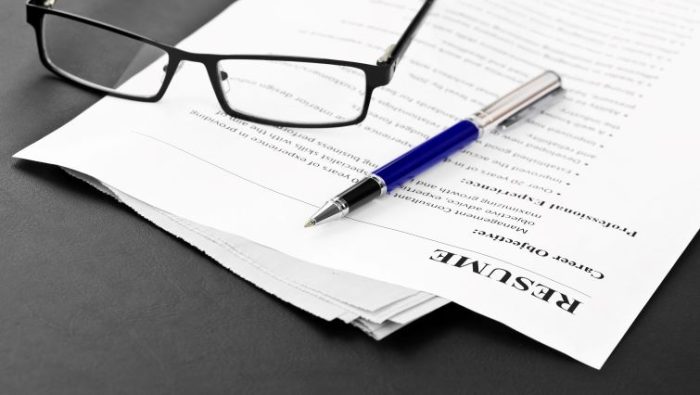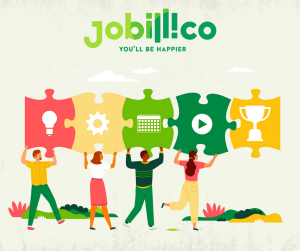How To Address An Employment Gap On Your Resume
 Publié le 9 August 2021
Publié le 9 August 2021
Searching for a new career is a challenge. Between filling out applications, submitting resumes and attending interviews, finding the right job can be a job in itself. Having gaps in your resume only makes this process more challenging. Rest assured, however, that knowing how to address an employment gap on your resume will allow you to land the job you want.
How to Explain Gaps in Your Resume
There are many reasons that someone may take time off from work for an extended period of time. In some instances, people take off to care for relatives—elderly parents, children or siblings. In other cases, they leave one job without having another lined up. Still others take time off for long-term travel, to study or just for a mental health break. Recruiters and hiring managers are human and they understand that people have very valid reasons for taking time away from work, but they also want to hire someone that they are sure will stay in the position for the long haul.
Employment gaps can reflect poorly on the applicant. To a recruiter, they may suggest someone who doesn’t stay in a job for a long time and simply quits without reason. Gaps may indicate that someone has been let go from their position. Gaps can also indicate that a person is not satisfied with their current career path and may soon look to change careers. No matter what the reason for your break in employment, it is important that you be prepared to address it and put your potential employer at ease.
How to Address an Employment Gap on Your Resume:
- Make good use of your time away
- Omit the gap
- Use a different resume layout
- Omit the month for smaller gaps
- Explain the gap
- Strengthen your resume and cover letters with addendums
- Explaining your employment gap in your cover letter
- Explaining the gap during your interview
- Be the ideal candidate
Make Good Use of Your Time Away
If you anticipate a gap in employment, try to make the most of it by getting certifications, performing volunteer work related to your field and participating in continuing education courses and programs. Attending industry events, trade shows and conferences are productive and will help boost your resume, even if you have an employment gap. You can review resume examples from professionals in your industry to get a better sense of how you can use some of your time away for career development.
Omit the Gap
If you were employed in your latest position for a few years and the gap was before that, consider omitting jobs from before that time from your resume altogether. If, for example, your gap was five years ago, only list the jobs within the last five years. Potential employers don’t expect you to include every single job that you have ever worked, especially if you are a professional who has been in the field for many years.
Use a Different Resume Layout
Most resumes are laid out in a chronological fashion, and this can be a problem if you have gaps in your employment. Choose a resume template that focuses on your skills and accomplishments instead of your actual dates of work. Other resume formats and templates allow you to list your educational achievements first, saving your work history for last. Play up your accomplishments at your last job, your certifications and everything else that makes you stand out as a candidate.
Omit the Month for Smaller Gaps
If you have small gaps in your resume or periods of time in which you were out of work for a few months within a single calendar year, simply omit the dates and include the year only. If you were unemployed for six months in 2019, for example, list your dates of employment like this:
ACME Widget Company, 2015-2019
Sam’s Glue Factory, 2019-present
When you use this format, it doesn’t show that you were out of work between March, 2019 and September, 2019. This only works well if you were only out of work for a few months during the same year. If your employment gap lasted for more than a year, it might be a little more tricky to use this method. If your gap was longer, your resume might look like this:
ACME Widget Company, 2015-2019
Sam’s Glue Factory, 2020-present
In this case, your gap will be more noticeable. Simply be prepared to explain to hiring managers and recruiters why you were out of work.
Explain the Gap
Explaining the gap is also effective. Hiring managers understand that life happens and career changing is normal. In fact, it happens on average every 2.7-3.4 years for Canadian job seekers. There might not always be another job lined up, and when this happens, there is a gap. There are several ways you can explain a gap:
January 2020-April 2020, Director of Marketing(contract position), ACME Widgets
In this example, adding the words “contract position” lets the interviewer know that the position was temporary, and this will easily explain a gap between assignments
April 2020-December 2021, Professional Development
-Attended Marketing101 Convention
-Earned Google Marketing Certification
-Worked as a freelance marketing consultant
In this example, you simply add in your professional development activities where you would normally add in your position information. Not only does this explain your gap, it also makes your resume appear more substantial and highlights your professional skills.
Strengthen Your Resume and Cover Letters With Addendums
If you have gaps in your work history, include other forms of evidence that demonstrate your skills. These can include a portfolio of your work, writing samples, reference letters or certificates from completed certifications. What you are trying to do is provide so much evidence of your satisfactory work that you are able to overcome any possible hesitancy related to your employment gaps.
A well put-together resume and portfolio, along with positive references from previous employers and colleagues will go a long way in helping the interviewer forget any doubts about your employment gap.
Explaining Your Employment Gap in Your Cover Letter
One of the best ways to tackle the issue of an employment gap is to explain it away in the cover letter so that the hiring manager is aware of it prior to the interview.
In your cover letter, give a quick explanation of your gap, but don’t dwell on it. Don’t overshare. Simply mention it, move on and get back to talking about your wonderful achievements. Here is an example of how to explain a gap in your cover letter:
In 2019, I served as Director of Marketing for ACME Widgets, where I was responsible for implementing a new social media marketing campaign. That campaign brought 710 new clients to the company, resulting in a profit increase of 92 percent. In August 2019, I left the company to care for my family. During that time off, I became certified in Amazon Web Services, Google Data Analytics and Hootsuite’s Social Media Marketing. I am excited to put my new knowledge into practice and serve as your company’s Director of Marketing.
In this instance, you simply mention it on your employment gap resume and move on. Don’t get into the specifics of your gap in your cover letter.
Explaining the Gap During Your Interview
You have explained your employment gap on your resume and in your cover letter, but you may encounter it again during the interview. The key here is to rehearse what you will say beforehand. Address the issue in a forthcoming manner, omitting any negative thoughts about the gap. If you were let go due to performance issues, don’t disparage your former employer. If you were let go due to an involuntary reason like a budget cut or global pandemic, focus heavily on your stellar performance before the job loss.
Many people lost their jobs during the Covid-19 pandemic, and this can create a gap in employment. Most employers will be sensitive to this and often forgive the gap if it were due to a Covid-19 job loss. Be sure to explain this to your potential employer.
If you intentionally took time off from your career–perhaps to care for an elderly relative or for children—simply mention this and continue with the interview. Do, however, make it clear that you are ready and eager to return to work. If you took time off to continue your education, show that your coursework is complete. If you took a sabbatical and traveled the world for a year, make it clear that the sojourn is over and that you are ready to move forward in your career and remain in one position for the long haul.
Be the Ideal Candidate
One way to overcome an employment gap is to be such a perfect candidate that the hiring manager simply overlooks it. The key to achieving this is to apply for positions for which you are a perfect fit. If you have extensive experience in your field, certifications, references and a good fit for the company’s culture, your potential employer may not even care about your gap. They will likely be so excited to hire you that they will overlook the period of time that you were unemployed.
The job market can be competitive, and you will need every advantage you can get if you want to be hired for the ideal position. A gap in employment can work against you if you don’t adequately explain the breaks, so it pays to know how to address an employment gap on your resume by using the best techniques to minimize the damage they may cause.







